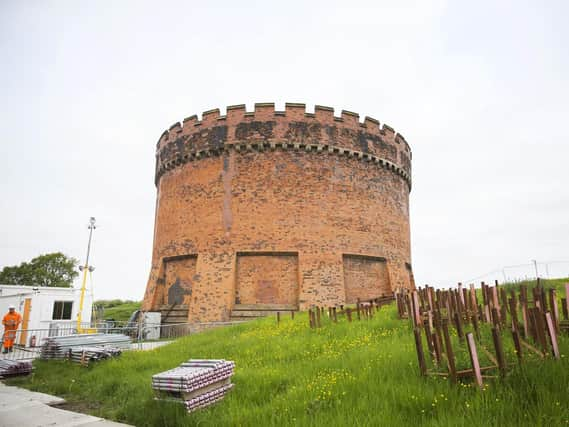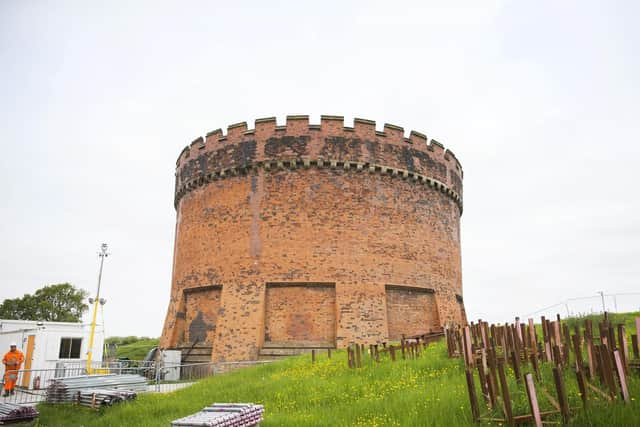PICTURES AND VIDEO: Iconic Victorian Northamptonshire landmark preserved for decades to come


The 4,000 tonne Victorian Great Northern Shaft, above the West Coast Main Line, was originally built by Robert Stephenson (son of the 'Father of Railways' George Stephenson) to provide light and ventilation inside the 1.5-mile long Kilsby Tunnel.
A 50-metre high scaffolding structure - which took 10 shifts to erect - has been installed around the inside of the shaft so the work can be carried out while nearly 400 trains continue to travel at 110mph on the track below every day.
Advertisement
Hide AdAdvertisement
Hide AdThe £3.5m refurbishment project, part of Network Rail’s 'railway upgrade plan', has taken nine months and has included soot removal, brickwork repointing and repairs.


The tunnel has 12 ventilation shafts and two 'great shafts', each measuring 18m in diameter.
Hasan Shah, scheme project manager at Network Rail, said: “This stretch of the West Coast Main Line is vitally important to local, regional and national rail travel.
"We’ve carefully planned the repairs to allow trains to run while we completed this essential work.
Advertisement
Hide AdAdvertisement
Hide Ad"Not impacting passengers and freight was vital and the huge, complex scaffolding structure has allowed us to do this with around 400 trains a day travelling up to 40 metres below us.


"The result will be a Victorian local landmark preserved for decades to come."
Kilsby Tunnel took four years to complete between 1834 and 1838 using an estimated 30 million bricks.
At the time, one mile would usually take one year to build but quicksand and flooding made the Kilsby Tunnel one of the most difficult - and dangerous - engineering projects of the Victorian era, with 26 of the 1,250 men involved in its construction losing their lives.
Advertisement
Hide AdAdvertisement
Hide AdDrunkenness and recklessness may also have played its part in claiming the lives of navvies with some attempting to jump across the mouth of one of the smaller 12 shafts above the tunnel.
Two or three are said to have died in doing so.